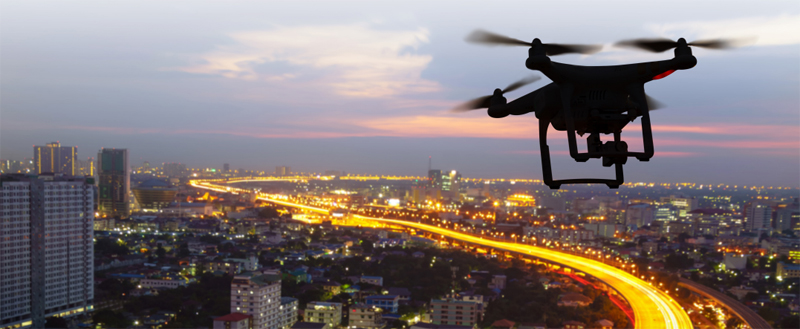 Following a recent webinar, Genetec has compiled an article giving technical advice on dealing with perimeter security concerns surrounding drones and aerial threats. Here is a brief introduction to the piece
Following a recent webinar, Genetec has compiled an article giving technical advice on dealing with perimeter security concerns surrounding drones and aerial threats. Here is a brief introduction to the piece
The commercial use of unmanned aircraft systems (UAS), more commonly known as drones, has surged in popularity in recent years. The global commercial drone market size was valued at USD $13.44 billion in 2020 and is anticipated to reach USD $501.4 billion by 2028. But what does this mean for existing approaches to perimeter security?
While drones can offer tremendous operational value, they can also introduce significant aerial perimeter threats. Hobbyist drones are fast, hard to detect, and equipped with high-resolution cameras, making them an attractive option for criminal organisations. Recently, we’ve seen drones being used to invade privacy, obtain illegal footage of sporting events, and transport weapons and drugs into prisons. There have even been reports of drones being used to drop rogue Wi-Fi access point devices onto buildings, as part of sophisticated cyberattacks.
The European Union has since tightened regulations and strengthened security. But it has also made it clear that businesses and those in charge of critical national infrastructure must take similar steps to keep their skies safe.
New regulation
Europe has recently introduced new ‘risk based regulations’ (Commission Delegated Regulation (EU) 2019/945 & Commission Implementing Regulation (EU) 2019/947) to ensure that drone traffic in Europe is safe for people on the ground and in the air. But does it provide enough clarity for the business sector?
With the new regulation in force, all European states will be able to define “no-fly zones” that drones are forbidden to enter. This will likely impact densely populated spaces such as airports, airfields, and city centres. The main security challenge is identifying drones that pose a real security threat. Network and broadcast-based remote ID can help overcome these challenges and remove the anonymity of operators.
Read the full article here

